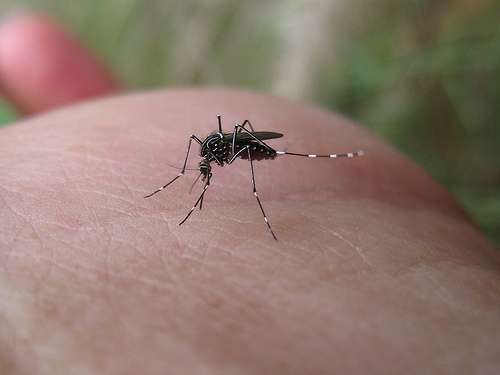Tourists and FIFO workers hit by mosquito-borne virus

More adults, tourists and fly-in fly-out (FIFO) workers were infected with the potentially fatal mosquito-borne arbovirus Murray Valley Encephalitis (MVE) during the most recent outbreak when WA experienced more than fifty per cent of the nation's recorded cases.
Curtin University School of Public Health researcher Dr Linda Selvey says "In contrast to outbreaks prior to 2000, the majority of cases in the most recent outbreak in 2011 were non-Aboriginal, and almost half of the cases acquired the disease outside their area of residence."
Dr Selvey says this continues to reflect a change, first noted 15 years ago, in the demographic pattern of human cases of encephalitic MVEV from predominantly Aboriginal and paediatric patients to predominantly non-Aboriginal and adult patients.
"As more non-immune people move into an MVE endemic area, either to do FIFO work or travel, it is no surprise that more cases would be non-Aboriginal adults. Forty per cent of the cases were infected outside of their area of residence" Dr Selvey says.
One case in particular was of a Canadian who developed the disease after returning to Canada.
The majority of those infected were involved in activities that led to a high exposure to mosquito bites, such as camping near rivers or creeks, fishing at dusk or attending outdoor evening sports in MVE endemic areas.
Rainfall and bird migration may impact new cases
Cases have been recorded as far south as the Goldfields for the first time in decades.
"Amongst other factors, this may be due to record rainfalls and southern migration of water birds which can carry the disease," Dr Selvey says.
"The disease is carried by birds and human infections are almost accidental."
"There is no specific treatment for MVE and the 20 per cent fatality rate in 1974 along with the 18 per cent fatality rate of 2011, reflects a lack of advancement in treatment.
"Because there are so few cases, it's unlikely there will be a specific vaccine so reduction of multiple mosquito bites is the most beneficial prevention measure."
A system called the Sentinel Chicken programme allows for early public health warnings of MVE activity in an area and it also promotes mosquito bite reduction.
Thirty flocks each consisting of twelve chickens are kept throughout WA and tested fortnightly for the virus.
In mid-2014 Sentinel Chicken flocks in northern WA tested positive for the deadly virus, however no human cases were detected.

















